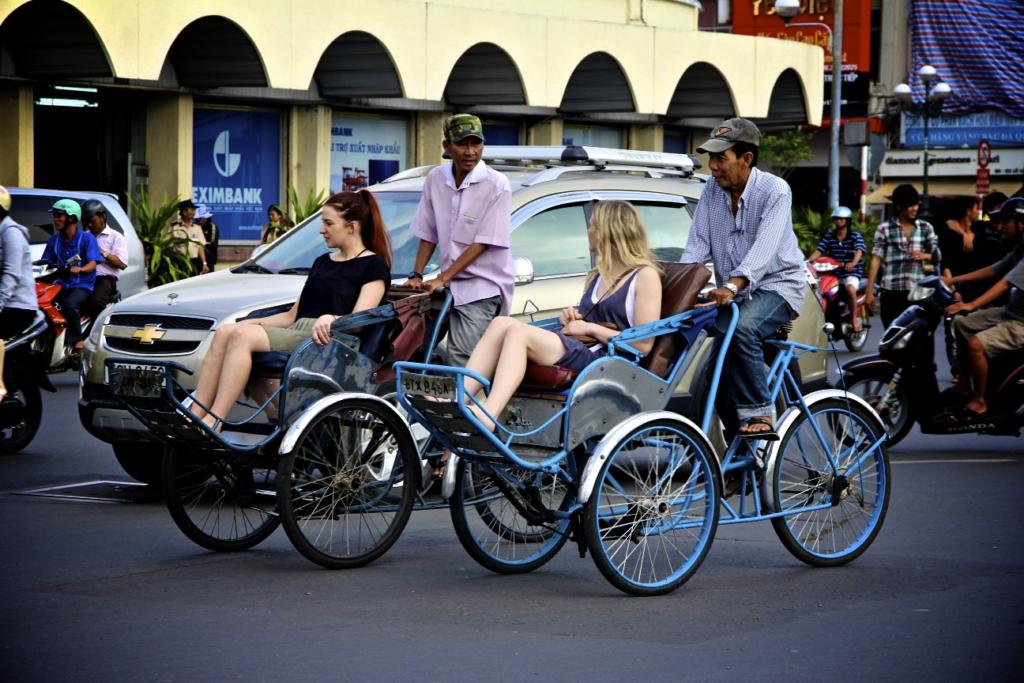Commuting within Vietnam
As we’ve already mentioned earlier, there are three airports that you can land at, depending on which part of Vietnam you wish to see. (Or perhaps you just got an excellent deal on a flight to that airport). Either way, once you land, it is quite easy to get to the main city centre. You can take a pre-booked taxi at the taxi counter at the airport itself. You will receive a confirmation token with the destination and fare written on it. Simply get on the taxi and head off on your journey into the city.
If you are flying on further, you can immediately take a connecting flight to your destination from either of these airports. Vietnam Airline is the preferred flight for most tourists, although you can look for cheaper deals on some of the other domestic airlines, some of which are privately-run.
You will have plenty of options to choose your flight from. However, the only disadvantage of smaller and busy airlines is a possible delay in departure. If you are not on time, you could also lose your seat. The one way to avoid that is to arrive well in time before your flight’s departure.
You can also take a taxi and travel by road to your next destination from the airport directly.
Vietnam’s road system goes back to the French colonisation when it was used to ferry raw material to the main ports for export. The same system has now been expanded from the district level to the national level, creating a network of roads that criss-cross the nation and facilitate commute for the locals as well as for visiting tourists. Here are some ways that you can move about in Vietnam:
Cyclo:
A cyclo is simply a bicycle rickshaw. While this cheap mode of transport is slowly dying out in major cities, you might still find it in some of the smaller Vietnamese towns. You will easily spot groups of cyclo drivers around major hotels and market places. This vehicle seats two persons and you must negotiate your fare before climbing up to avoid any confusion later. It should cost you not more than 12,000d to 25,0000d for a short ride, and between 25,000d and 40,000d for a longer or night ride.

Some cyclo operators are syndicated by tour operators and hotels and you can hire them for small sightseeing rides around the city.
Xe Om:
Moving up the transport ladder is the xe om (zay-ohm). This motorbike taxi makes it faster and easier to move around the city as long as you don’t have a lot of luggage with you. As with the cyclo, negotiate the price before you begin the ride. Don’t pay more than 15,000d for a short hop. How do you know who is a xe om driver and not just another local? Don’t worry, they will find you before you look for them.
Taxi:
Every city in the world has taxis and Vietnam is no different. Look for taxis with meters since those are official and safe to travel with, especially if it’s your first trip to Vietnam. There will always be dishonest taxi operators; hence it is advisable to only travel with reputable or recommended operators, such as Mai Linh (www.mailinh.vn) and Vinasun (www.vinasuntaxi.com).
Of course, there are always app-based taxis (car and motorbike), like Uber and Grab, in most major Vietnamese cities.
Bus:
You might think hopping aboard a local bus with scant to zero knowledge of the local language might be a terrible idea. You’d be surprised to know how easy it actually is. Arm yourself with a bus map and get ready to explore Vietnam the way the locals do.
Own car:
Of course, one of the best ways to get around Vietnam is by hiring your own two-wheeler or motorcycle. This gives you the flexibility to go where you want and when you want. Cars always come with a driver, but if you are comfortable then you have the option of riding the motorbike yourself.
Are you eager to get started on your trip to Vietnam? Please do check out our Vietnam Holiday Packages where you can get details on all your flights, tickets, visa and even forex formalities information. At Thomas Cook, we are standing by to help you with all your travel-related needs.



